Sarah Blake: Inside a $1 million-a-day meth lab run by the Mexican Sinaloa drug cartel
When News Corp journalist Sarah Blake and photographer Nathan Edwards entered a Mexican jungle drug lab, they heard chatter on the radio about “gringos”. They had been spotted by a network of spies. This is what happened next. SEE THE VIDEO
True Crime
Don't miss out on the headlines from True Crime. Followed categories will be added to My News.
The radio chatter starts as soon as we turn off a highway into thick brush outside the north Mexican city of Culiacan.
Voices of cartel “falcones” or informants travel between three captured walkie-talkies tacked on the front dash of our armoured vehicle, describing our convoy and where we are headed.
There is a mention of “gringos”, probably referring to photographer Nathan Edwards and myself, as we tip and turn on a sometimes invisible dirt track, across creeks, past farmland and through dense jungle for two and a half hours.
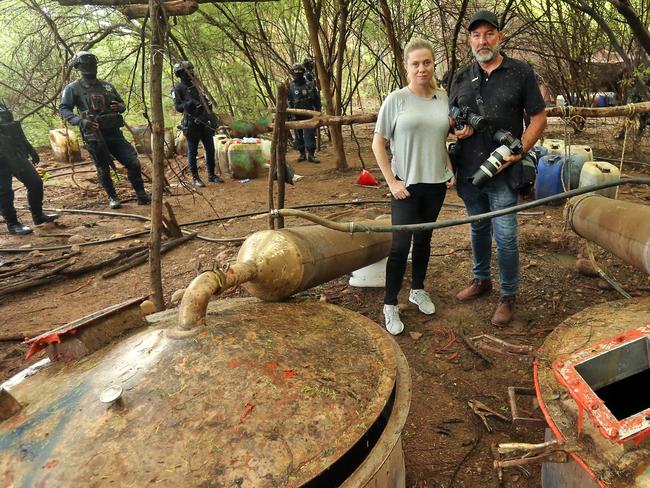
They are talking about us,” explains our police escort, codenamed Nitro in order to protect his identity and the safety of his family.
“Whenever we travel through the cartel country, we can hear them talking about us because we have taken their radios. These are not full narcos (or gang members) but their lookouts (who are paid a monthly wage to be informants).
“Often they are trying to prove themselves to the cartel to become a member. In this area there are many of them, sometimes on every corner we go past.”

It’s our introduction to the dangerous work of the Sinaloa State Police, who are fighting what appears to be a losing war against the sprawling criminal enterprise founded by Joaquin “El Chapo” Guzman and now run by his three sons and former deputy, Ismael “El Mayo” Zambada Garcia.
We are in Sinaloa’s state capital to report on the booming methamphetamine or ice factories of Mexico’s most infamous drug cartel, which is increasingly targeting our profitable domestic market, and their staggering output has shocked even the veteran Australian police officer and Central America expert with whom we are travelling.

“I am a bit surprised today by the scale of this lab … It’s certainly on a super-size scale,” says Detective Superintendent Conrad Jensen, senior officer for Latin America for the Australian Federal Police, who is based in Mexico City.
“You can’t compare this to anything we’ve seen in Australia … this is on a commercial scale, pumping out methamphetamine.”
Over four days Nitro and 40 or so of his colleagues accompanied us around the city, showing off two rural ice labs their team recently seized and taking us on heavily armed patrols through the streets.
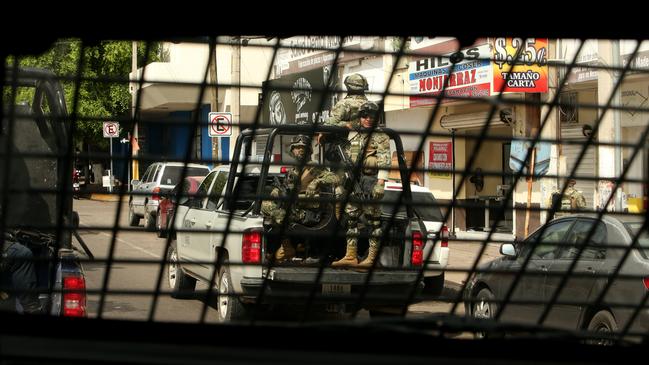
The officers have nicknames they have picked mainly from the periodic table, such as Zinc and Nickel. Their faces are covered at all times to shroud their identities and they wear full body armour.
Former special forces soldier Nickel walks with a pronounced limp, still recovering from an ambush near his home in November in which he lost count of the times he was shot before single-handedly pushing back a dozen cartel members.
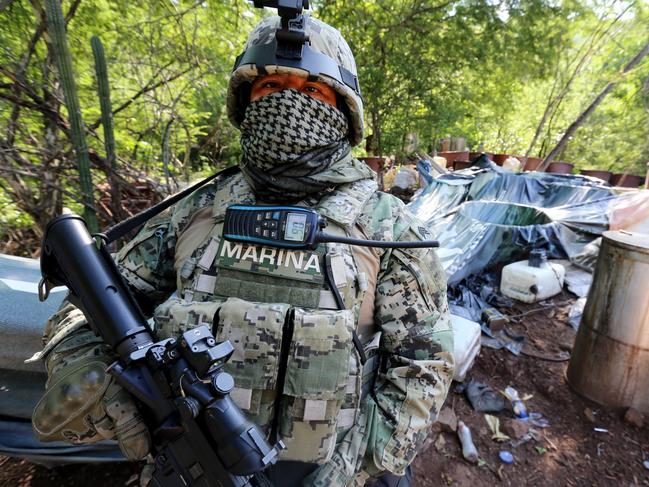
The first meth lab was deep in the jungle, the rough 2.5 hour drive taking us there, and the second was on the outskirts of the suburbs, only a couple of kilometres off the highway and on the edge of a large and beautiful lake surrounded by mountains and favoured by local families for fishing.
Between them, the two labs were producing about 30 tonnes of ice a month, the majority of which would be shipped over the border to the US. The rest travels to markets in Europe and Asia and increasingly Australia.
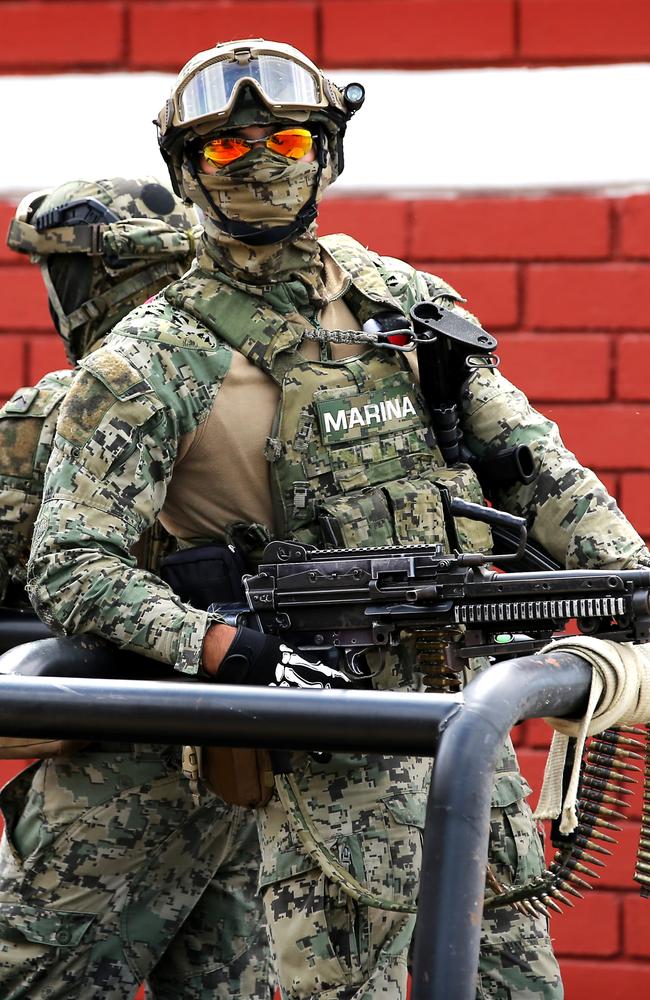
“We are a lucrative market and we’re certainly on the radar of the organised crime groups, the cartels here in Mexico,” says Supt Jensen.
“We’ve seen an increase in meth coming out of Mexico over the last two to three years.”
Supt Jensen, who has been posted to the country for the past two years and frequently works with Mexican authorities investigating the ice trade, describes this growth as exponential.
“The number of seizures don’t reflect the true scale of the story, rather the size of the individual seizures,” he says.
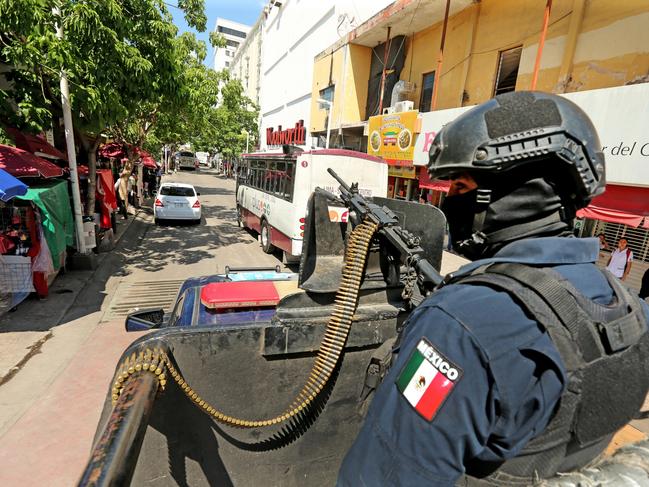
“Where we used to see seizures of 50 to 100kg just a few years back, now they are well into the hundreds of kilos or even tonnes.”
Recent examples include the world record 1.7 tonnes of Australia-bound, Mexican ice taken in a joint AFP and US authorities raid in Los Angeles in January, as well as 755kg of meth seized in Melbourne in August. The latter was hidden in cow hides and a Mexican national has been charged.

Australians consume about a 10 tonnes of ice a year and also pay more for the drugs than most countries, with a street price of A$750,000 per kilo or $750 per gram, according to the AFP, as opposed to an average price of $53 a gram in the US, according to the Drug Enforcement Agency.
Mexico supplies about a third of Australia’s ice, according to the AFP, and it is increasingly sought after by users as a higher-quality version of the crystallised amphetamine, due to improvements to production and the recipes of “cooks” paid by the cartels.

The drugs are moved and packaged in Culiacan warehouses, before smugglers transport them in shipping containers from the Mexican ports of Manzanillo, Lazaro Cardenas or Mazatlan and then through either California, Asia or Panama to Australia.
Local distribution is mostly taken care of by outlaw motorbike and Asian crime gangs, although intelligence shows Mexican cartels are increasingly on the ground in Australia.
“Like any sort of business enterprise they’re looking for new markets,” Supt Jensen says.
The decriminalisation of pot in many US states has prompted a change in business for the Sinaloa cartel, whose main drug output was previously marijuana grown locally or cocaine smuggled from Colombia.
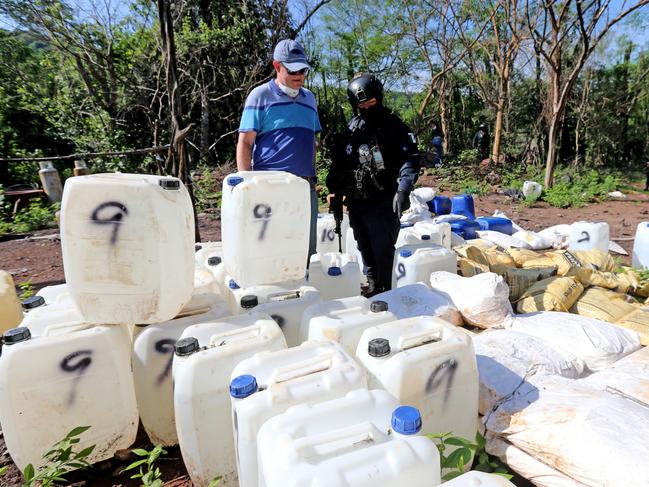
The numbers are staggering, with even smaller labs, such as the lakeside camp we toured, churning out 250kg of product a day – worth US$1 million – to their owners.
These mountains of cash, combined with the controversial appeasement policy of Mexico’s new government has sparked a horrifying new chapter in the country’s long battle with cartels.
President Andrés Manuel López Obrador campaigned last year on a “hugs not bullets” approach in order to try to bring peace to the troubled country and announced in January that the “war on drugs” had ended, but three recent cartel attacks have sharpened criticism of this policy.

They include the murder last week of nine US citizens – three mothers and six of their children, including eight-month-old twins – whose SUV convoy was sprayed with bullets and set on fire near the American border.
In early October, 13 Mexican police officers died in an ambush in the western state of Michoacan, and several days later, Culiacan itself was taken siege by cartel members in an assault that has been described as a “new blueprint for organised crime groups”.

Although kingpin El Chapo will die in jail in the US following this year’s high-profile New York trial, his family retains significant control of the cartel. When his son Ovidio Guzmán was arrested in Culiacan, hundreds of cartel members took control of the city on October 17. In 10 hours of rolling gunfights, cartel members targeted army and police families, holding them hostage until Guzman was released at the order of President Lopez Obrador.
“This was an unmitigated debacle,” Latin America and drug trafficking expert Bruce Bagley said of the battle, which killed 13.
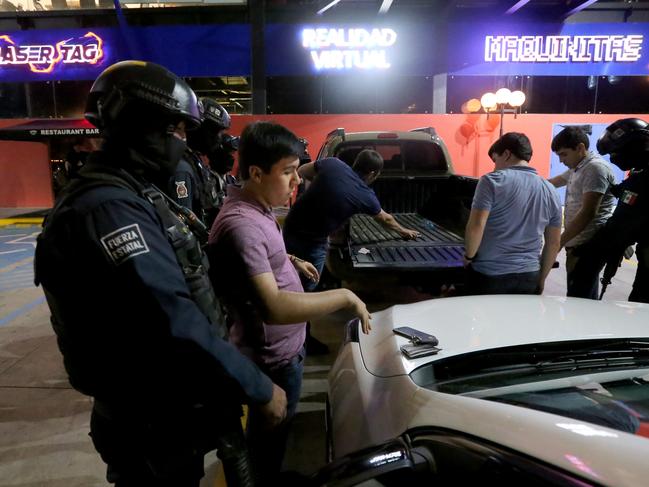
“If it can happen in Sinaloa, it can happen in half a dozen other places, and now the cartels have a formula.”
The local paper editorialised after the Culiacan siege that people in the city felt the “parallel state” had shown itself in the watershed event.
“Life goes on, yes, but not in the same way,” Ismael Bojórquez, the editor of Río Doce wrote.
“We don’t know if this will now be the reaction every time criminal groups feel threatened – and we know even less what the federal government intends to do about it.”
President Lopez Obrador last week rejected an offer of American support from his US counterpart to tackle the killers of the Mormon families in Sonora, and has been forced to repeatedly defend his approach to cartels.
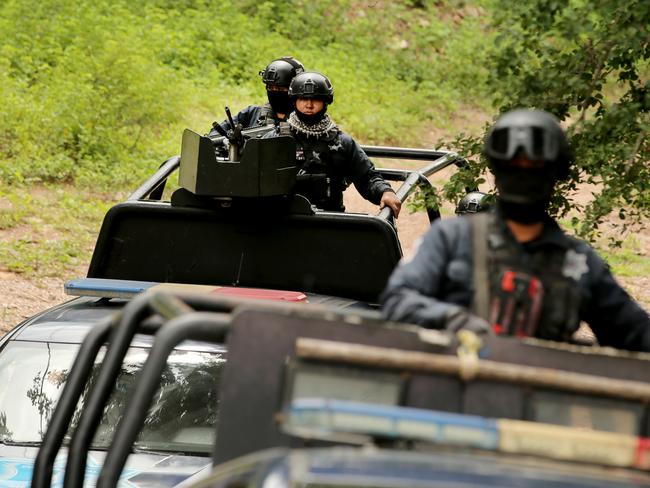
“This is no longer a war. It is no longer about force, confrontation, annihilation, extermination, or killing in the heat of the moment,” he said following the Culiacan attacks.
“This is about thinking how to save lives and achieve peace and tranquillity in the country using other methods.”
The deputy chief of the SSP, Major Carlos Leyva, codename Armageddon, explained that his officers understood that even though are continually risking their lives, and have lost many colleagues, they know victory over the cartels is unlikely.
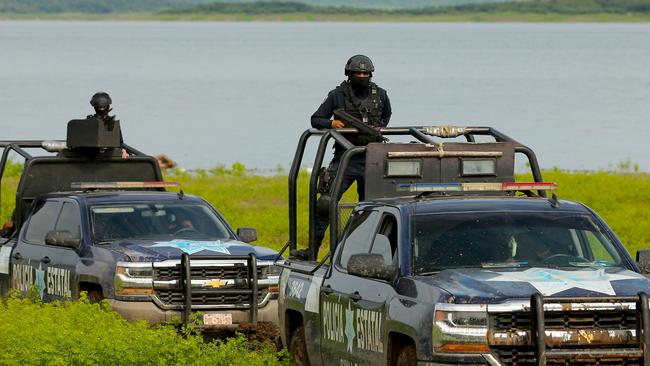
“It is like the snake, you cut off a head and there are two more to deal with,” he said of high profile take-downs such as those of the Guzmans.
He insists the work of taking labs is worthwhile.
“These results are a strong blow for organised criminal groups, in economic terms because of the loss of chemicals – we take them away or we destroy them,” he says.
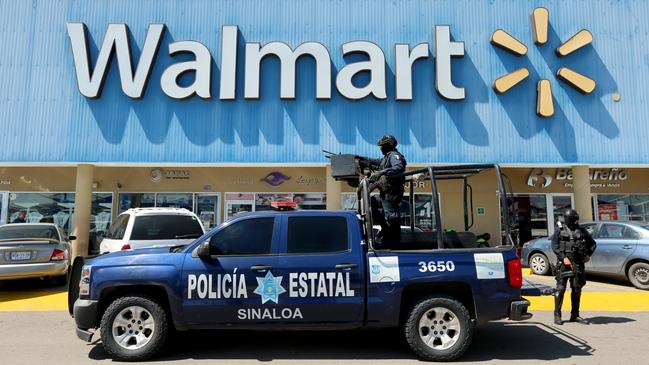
MORE:
Mexico’s top cocaine cartel infiltrates Australia
The hi-tech lab tracking Australia’s cocaine
His squad has seized at least 49 labs this year, after only nine in 2018, and there are so many they don’t have enough officers to raid them as fast as they learn about them.
“The market is getting bigger and bigger and bigger,“ he says.
Major Levy is one of several SSP bosses brought in from outside Sinaloa from the armed forces two years ago to overhaul a largely corrupt and inept state police force.
“It’s an important job and we like to draw attention to the police agent’s sense of duty, their commitment and responsibility. And their courage as well, because they are very exposed on this type of operation,” he says.
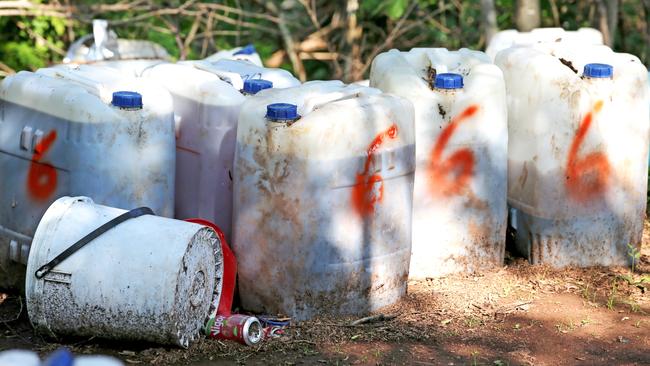
“We are doing a job that very few people want to do.
“We know these drugs will affect a lot of people. The knowledge that the drugs will make their way into the hands of children and young people, strengthens the social commitment of our police agents.”
But for all the work the SSP are doing, alongside their Mexican Army and Marine partners, Major Leyva admits they have not made a single arrest in the jungle labs they raid.
“In terms of methamphetamines in rural areas, in these two years of administration, we haven’t made any arrests in the labs,” he says, adding authorities have had more success with fentanyl and cocaine seizures in urban areas.
“The cartels have their own forms of communication, and they know when we are coming, so by the time we arrive they have left.”
